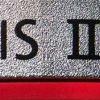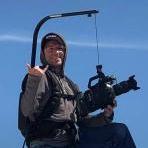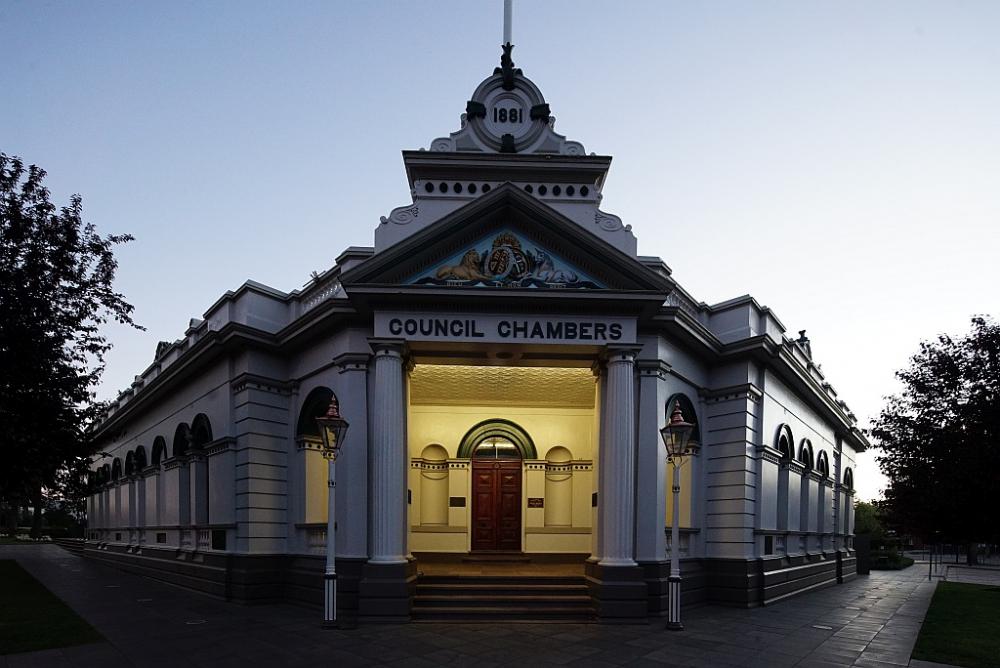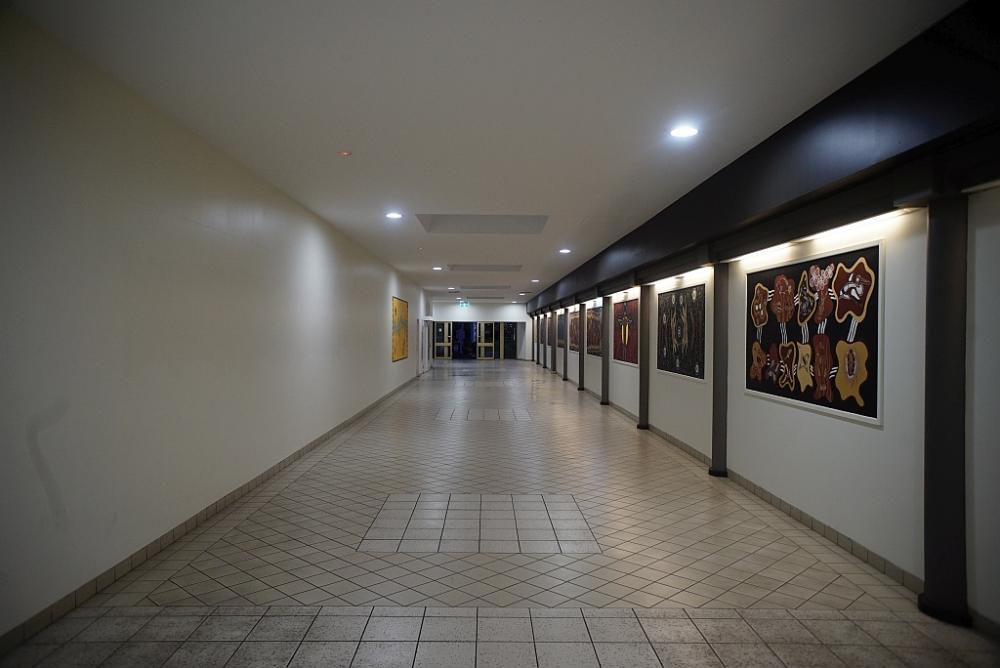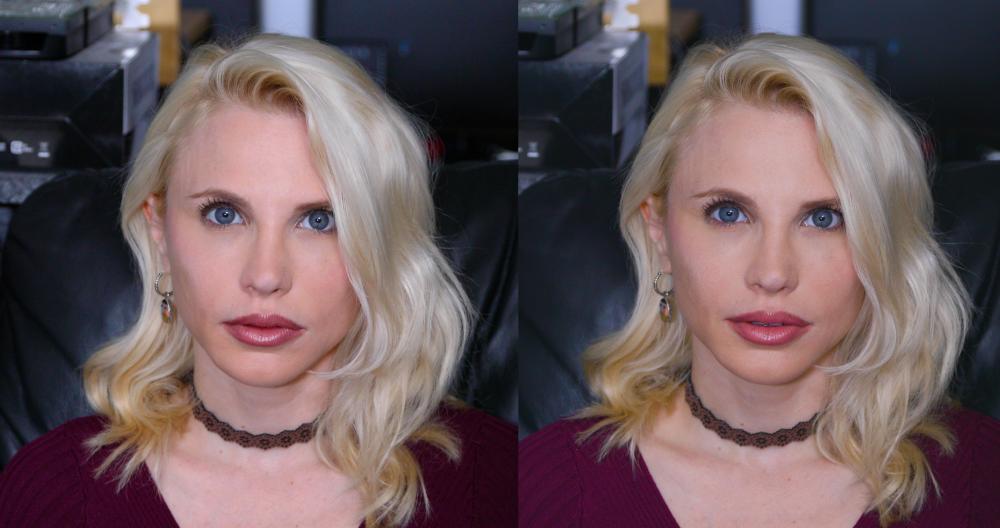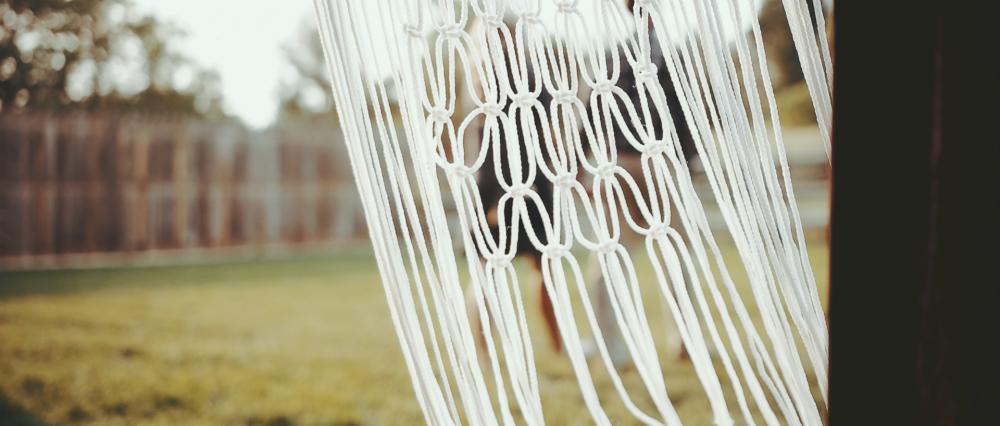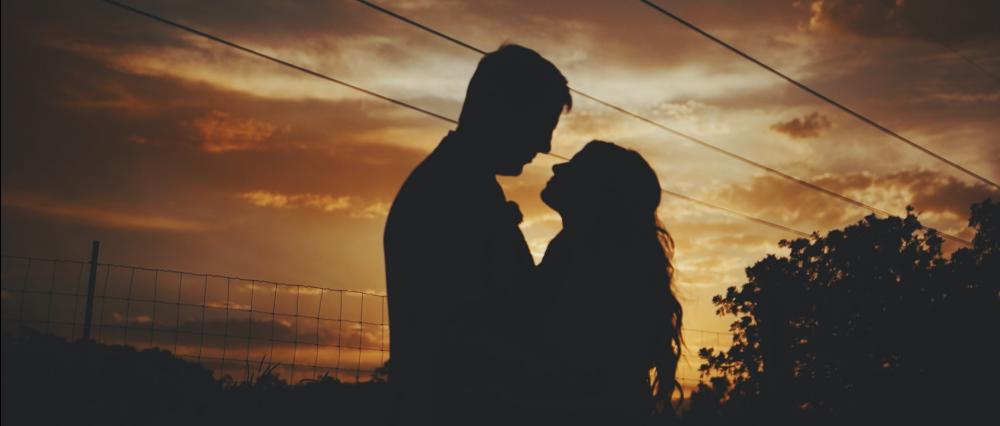Leaderboard
Popular Content
Showing content with the highest reputation on 06/09/2017 in all areas
-
So as I've hinted more than a few times in the other thread, the discovery of the Cinelike D and other bits and pieces for the GX80 etc was actually a bit of a happy accident while I was trying to do understand the Panasonic wifi stuff for something else. And here is that something else. Well at least a prototype of it but it is fully functioning and will just be finessed a bit more. Basically, its a wireless hardware remote for the G series cameras that operates over wifi and can currently control record start/stop, shutter speed as well as aperture and focus if you're using a native lens, including a single shot AF switch. For the non-Cinelike D cameras that can now be hacked to have Cinelike D there is also a dedicated button to toggle it on and off so you don't need to mess about with browsers and computers or smartphones anymore. Focus and aperture control are done on a joystick and everything else is switches. I'll be putting a layer switch on so that it can be toggled back and forth to a different control mode for ISO, WB and other stuff. As this is the prototype it is nowhere near the finished piece and it will be reduced in form factor to just be about the size of the control board. Power is by any USB source so there are billions of options. There is a lot more finessing and feature enhancement to go on with regard to the focus control (and yes, I know exactly what you'll all want it to do !) but the hard part is done now. It does support the display of the values on a screen and I'll be sorting some options out for that. The purpose of this gadget is primarily for use with a gimbal but it can also be really useful on a tripod bar for anyone shooting live event stuff. For cameras with inbuilt lenses I'm going to add a zoom mode on the joystick. A very quick very rough demo so you can see it in action. Any lag you might see between me operating the controller and the camera video is just a sync issue between me throwing the two recordings on very quickly9 points
-
nothing special, but i really like the cinelike d hack!4 points
-

Canon C200 vs Panasonic GH5, a preview
Orangenz and 3 others reacted to TheRenaissanceMan for a topic
Also, keep in mind there are still a lot of question marks surrounding the EVA, including the most critical point: what does the footage look like? Kinda important, that. We have the broad strokes, as we did when the GH5 was announced, but once the final product is there to see, I could see some people changing their tune. 10-bit Varicam image quality to dual SD cards in a 2-pound body sounds VERY attractive to me. Announcing a "winner" in this product segment is premature, and ultimately kind of silly. The FS7 has sold well, as has the FS5, and that line still has benefits not shared by their competition (adaptable and well-supported mount, name recognition among producers, timecode, the ability to speed boost, high quality HFR, internal 10-bit, etc). The EVA will likely do great. The C200 is already #2 in cinema cameras on B&H. There is no "best." Those days are over. There's only different. This is the point I was refuting. Mine are not 1 or 2 fringe use cases, but the kinds of situations I encounter all the time, spending day in day out shooting video for both money and pleasure. I never denied that the C200 was a powerful camera, or that the RAW was very exciting; in fact, I spent an entire paragraph of my first post in the topic praising Canon for including it. My point was simply that the lack of a 10-bit codec hurts the viability of this camera for me and others like me. Believe me, I'm not the only one. Take a peek at DVX User. The camera is already a smashing success, and it has a lot of points in its favor. If I were a different kind of shooter, I'd be all over it. Side notes: -I wouldn't exactly call $7500 for the camera alone (plus media, power, etc) to be in the range of "low-budget filmmaking." -If you buy used tungsten lights designed for filmmaking (dirt cheap on eBay now that LED is gaining steam), you can pin your gels to the barn doors where they won't "melt in 10 minutes." That's nuts! Your considerable talents would be better served focusing on your scene than finagling subpar lighting tools. -By not buying CFast cards, you can make room in the budget to go up to that couple on the beach and slip them a twenty to relocate.4 points -
I hear a lot that you should focus on one job, especially in filmmaking, because it's a "collaborative process". But my spirit guide lately has been Jim Lujan (writer/character designer/animator/voice actor/composer/editor). Today I was looking a lot at where to start learning to compose music for films.. which is a job made up entirely of skills I don't have (but with time, anyone can do basically anything of course). Then I started thinking I was being dumb.. I still want to believe at least learning some of everything is going to be helpful, even if you never end up doing it, just for ease of communication with your team maybe (actually I'm keen to do it all as well) - but I know I'm closed minded at times and possibly in the minority, so I'd like to hear some opinions. I know Tarantino was very relieved to get the advice from Terry Gilliam "As a director, you don't have to do that. Your job is to hire talented people who can do that -- Your job is explaining your vision. Your job is articulating to them what you want on the screen." Is the biggest risk that I do it all and just don't realize that I suck at half of it?4 points
-

Canon C200 vs Panasonic GH5, a preview
dbp and 2 others reacted to TheRenaissanceMan for a topic
The documentary was destined for broadcast, and post wanted 10-bit for some compositing stuff with stock photos. XF-AVC isn't yet an option on the C200, so Raw would've been my only choice there. The actors weren't blindly improv-ing for 5-10 straight minutes. They started by working directly from the script, then the director would talk to them about the character and encourage them to change the words up for their comfort. Then the actors would add new lines and topics, and feel their way to a richer, more natural conversation. This meant the conversations had to play out in as long a take as possible, at least in the first angle, as otherwise the dialogue would suffer. Very cool working method, and we got some great stuff. More to the point, I was hired on as the DP. You've never worked professionally, so this may be new to you, but I would never presume to tell my director how to work with his actors. I'd never work again. As the shooter, my place is to collaborate with the director and bring his vision to life. "You shouldn't work that way" or "I can't work like that because my camera..." etc are not options. Commercials and corporate work are generally for broadcast, meaning that I'd have to use RAW. Also, this was another instance where clients requested 10-bit 422. In addition, it had to be delivered to their post people for a relatively quick turnaround. If post called me and said "what the hell is this codec and how do I edit it?" and I answered with some shit about the Canon utility and how great it'll be once NLE support is widespread, guess who's never hiring me again? We were not able to have electronics within a wide radius of the Tesla coil, as there was a risk of the field it creates frying anything nearby. Also, all available house power was going to lights and the robot, and we had a generator to handle the coil. There was nowhere to set up a DIT station, and we were shooting somewhere pretty of of the way, so no extra personnel for that either. Plus, as you said, it wouldn't be ideal. We would've needed to bring down the robot arm, dismount the Faraday cage, change out the card, format, re-mount the cage, run the camera, then re-position the robot arm. And that would've taken 2-3 people to do quickly--people who were needed to reset the rest of the scene elements in a timely fashion. We were shooting night exterior, and we only had one day with the coil. There was no extra time to wrestle with media. That's why I say this camera falls into no-man's-land. The 8-bit isn't good enough for me and many of my clients, and the RAW isn't practical for many shooting scenarios I encounter day to day. And the fact remains that I need enough media for a full day of shooting; it's an actual problem, not a straw man argument. For you personally, shooting RAW all day with minimal media may be a viable option. For many of us, it is not. Implying that we are being disingenuous or lazy for pointing that out is reductive and misleading.3 points -
specialize in one area or...
Timotheus and 2 others reacted to HockeyFan12 for a topic
If you only suck at half of it you're way ahead of most of us. I think the advice that you should specialize is mostly given as career advice. It makes sense. If you spend half the time doing something, you won't get as good as if you spent all your time doing that one thing. And it's difficult to market yourself as someone who does two things okay instead of one thing well. (This isn't as true in smaller markets. Outside LA, London, NYC, Vancouver, etc. generalists or people who run their own one-man companies can thrive. It's harder in a big market.) If you're not that worried about supporting yourself in a big market, just do whatever you want! If you're excellent at one technical, often tedious thing and good at networking (say, you learn Avid or Nuke relatively well, which can be done in six months, or you learn to pull focus and join the union) you can make six figures right off the bat, or close to it. And then from there you can support yourself in a big city (well, barely), learn from others, and see and observe how it's done. Then you can either learn more about what you're doing or observe what other people in entirely different departments are doing. David Fincher took this route, not because he wanted to do it all himself, but because he wanted to be able to so he knew no one was slacking on set. Or you can take that same route but find other people to bring onto your projects instead of learning from them! Once you get signed to a major agency like CAA or get a creative director job at a big company (which can take five years or more, admittedly) or get signed to a production company as an advertising director, then your agent or company will put together packages of talent for you when you direct. I worked on a project with a first-time director who had no technical skill, but he did a really good job writing and directing because of the team they put together and that he collaborated with. Another friend of mine was signed to one of CAA's top agents right out of school and he didn't know what an f stop was. Maybe he did, he just didn't care. He was a storyteller with a great crew. Another friend had a similar experience, signed to a major company right out of high school. Again, not technical, but visionary. A LOT of festival winners and Vimeo sensations secretly have major agencies and production companies (think CAA, WME, the Mill, etc.) doing the dirty work. They say if you wear every hat you get judged by the one that first you worst. But if you wear them all well (or even half of them), more power to you. Maybe you will have to pick up the slack for someone some day, maybe it will help you run the set faster. That knowledge will help out every step of the way. But you DEFINITELY don't need it. At all. And the fear that you do can hold you back. If money is not your main consideration, and if you're not struggling to pay the bills in a big city (which can kill your success; it's not always a good idea) just follow your bliss. I think Robert Rodriguez and Steven Soderbergh would do every job on set if they could because they come from a technical and formal background. But a lot of people are simply very passionate about one thing, and that one thing is why they get hired. Most directors aren't super technical, they just have great taste and people skills and management skills and are good storytellers. This is even true of film schools. Some of the best (Columbia, for instance) provide less technical education than a day on this forum would. Some of the best (AFI cinematography) provide more technical experience than you can find on the entire internet. By far. It depends what the student wants! If you can do what you want, do what you want. I wish I had the luxury but I gotta pay rent lol.3 points -

The Canon C200 is here and its a bomb!
Christina Ava and one other reacted to DBounce for a topic
First review of RAW on the C200: RAW footage samples... I'm pretty pumped for this camera.2 points -
Canon C200 vs Panasonic GH5, a preview
TheRenaissanceMan and one other reacted to gt3rs for a topic
Worst case scenario we get 300 Mbits XF-AVC 8bit 4:2:2 on CFast, best case scenario we get 400 Mbits XF-AVC 10bit 4:2:2 on SD card.... in 1/2 year we will know. I'm quite sure that they don't have it yet out just to protect the C300 II and not piss the owners.2 points -

Canon C200 vs Panasonic GH5, a preview
ade towell and one other reacted to TheRenaissanceMan for a topic
Maybe to a hobbyist. But there are many real-world shooting scenarios in which cards cannot be dumped on site, or when doing so would disrupt workflow. Documentary shoot. We're stealing shots on a ferris wheel that plays a pivotal role in the story. Get our lead actor, get our gear. Each little pod has 2 sides that fit 2 people each, and we want our subject alone in the frame. So one camera op, and our director running sound. We ride this thing for a few hours, asking questions and watching this guy soak in the memories of this ride, and the surrounding scenery (which we're also getting scenery of when our guy has to leave--his time was limited). In that situation, how could I have offloaded every 15-30 minutes? Another shoot. Gaffing a micro-budget feature. Very actor-focused. Mostly 2-camera, lots of improv. We're often running 5-10 minutes takes, and really letting our actors play it all out and find what works. Were we supposed to stop the director and actors every couple of takes to say "sorry guys, hang tight while we swap cards"? Not that we had the personnel to have someone wrangling data the whole day anyway. Say you're not shooting for yourself. I DPed a corporate spot a while back. Nothing huge, but a good door to have my foot in. We had two producers on site to keep an eye on things, myself, a gaffer, and a sound guy. Cards went off to their in-house post team straight afterwards. If I'd told the client ahead of time that they'd have to provide an on-site data wrangler or pay me to bring one on, they would've just hired someone else rather than incur the additional costs. Small commercial for a juice company. Not trained actors--they insisted on having the company founder on camera. Only problem is that the guy's not good on camera. Like... At all. Flubbed every line, stammering, kept making this weird snarly face without realizing it. We're way out away from the building to get the background they want for his big moment. High sun, huge contrast situation. Being able to say "don't worry, we've got all the time in the world" was hugely helpful on that shoot. If we'd had to send runners all the way out to the main office and back with cards every couple takes, I doubt we would've gotten the footage we did. Not without a second shoot day, which the client wouldn't have done. Short film I DPed. We're doing a huge lightning effect; during the climactic fight, the witch shoots a lighting bolt from her staff our valiant hero in his suit of armor. The effect works by doing 3 passes: one with the witch holding her staff up, one with our guy in the suit and a huge 12 foot Tesla coil, and a clean plate pass. Our effects guy says we need to do all 3 passes in one single shot, without cutting. Camera is surrounded by a Faraday cage on a motion control robot, so that it won't fry from the Tesla coil. That means every take, we had to set up the knight and coil, replace them with the witch and a lighting gag, then get it all out of frame for the plate. We easily ran at least 15-20 minutes per take, and needed to squeeze every drop of image quality from these shots in post. I simply don't know how I could've accomplished that setup with 2-3 cards of limited capacity. Even if it is possible to offload cards on the day, having enough media to last the day, and of large enough capacities not to have to offload them once or twice an hour, makes things much smoother and easier on you, your crew, and your clients' nerves. For an owner-operator, it is an essential part of your package. What if your client wants a run and gun shoot that you estimate will create 5-6 hours of footage, and they want it all in 10-bit 422? You have to be prepared for that and any other scenario, or you've lost the advantage of owning. TL;DR: For some users, offloading as you shoot may be a viable option; however, it is not a viable option for all users or all shooting situations.2 points -
To anyone interested in the EVA but not the EF mount, Mitch Gross confirmed several times on DVXUser that the only mount the EVA will be released in, is EF mount...unrelated to the EVA but certainly pertinent to me, the UMP is 2000 cheaper, B&H sells a Cfast to SSD adapter for all my SSD media and I'm loving the footage out of the camera..a member on this forum did a comparison and the UMP & GH5 cut together beautifully...and it comes with 3 optional mounts...the PL being only $245 and a slightly more expensive B4 mount user swappable...the Nikon with aperture ring will release this summer...so goodbye EVA for me...I liked the name...but the EF mount not!...interesting how modular and flexible the UMP really is...sorry to get off topic! Thanks much for the information Roberto...looking forward to seeing your film!!2 points
-
That's a great looking development,well done1 point
-
COOOOOOLLLLLLL!!! Whats the main board? Raspberri? Arduino? Congrats, your gadget is super!1 point
-
Canon C200 vs Panasonic GH5, a preview
webrunner5 reacted to mercer for a topic
I hope the XF-AVC is 10bit. As of now that info is TBA. I assume it will be, or should be, but knowing Canon I wouldn't bet on it.1 point -
Canon C200 vs Panasonic GH5, a preview
TheRenaissanceMan reacted to ade towell for a topic
am not sure it's an unrealistic standard to expect a camera costing £7,700 to have a 4k 10 bit codec. It's also my only major grumble with what is otherwise looking a fantastic camera1 point -
But your argument is akin to me saying I want to buy a Ford Fiesta but can't because it doesn't go 150mph. Basically, I would be saying I was never really going to buy a Ford Fiesta because it doesn't meet my needs, or it's impractical for what I am looking for in a car. It's not a fair criticism of the car, it's an unrealistic standard I am trying to hold the car to... hence it's a moot, straw man argument. Either way, I think we can both agree it is an interesting camera, especially for Canon to have produced. Btw, the XLRs on the C200 are on the body and not the handle like the C100 and it is my understanding, the DPAF will work via wi-fi using an iPhone or iPad... unsure how much of a lag there is, but I believe users have had good results using it with the 1DX2. And are we sure that Sandisk Extreme Pro cards will be usable with the 400mbps Dual ISO? Didn't Panasonic just release expensive, high data rate, SD cards? I assume for this purpose? Even with the GH5, there has been issues with cards and compatibility, and I must assume the EVA will as well. Sure it probably won't be as much an issue as a C200, but it is something to be curious about. On another note, have you used the Contax Zeiss 28-70mm f3.5-4.5? I am interested in this lens for my 5D3.1 point
-
I'm about to start a new thread with a practical application of all of this poking around that some of you may be interested in.......1 point
-
iMac Pro
jonpais reacted to Bioskop.Inc for a topic
This is all very interesting & it reminds me of when everything changed from SD to HD, the render times on FCP or AVID were very very long - the offset of this was that the BBC had a bar & as an edit asst you'd check in every pint to see how the final render/export was going. The whole idea of having to transcode footage reminds me of those days - importing took hours & so did the final export. I still wonder whether we are just expecting too much from computers, and NLEs, with the advent of 4K? Or is it down to us & have we just become a "Now" culture, where the idea of having to wait for something has become intolerable and completely unrealistic? It also leads to the question of whether people have got into bad habits with their workflows or never really learnt good workflow practices? Ask yourself this, when you import your footage, have you already selected your shots or do you simply import all the footage? Anyway, the good news, according to iFixit, is that the new iMacs can be opened & the important parts (processor, graphics card etc...) are no longer soldered into place - so we can now upgrade the new iMacs...1 point -
I don't work on long features in terms of deliverable, but 4k documentaries with high shooting ratios and lots of multicam. In this era that's not unusual -- 4k GoPros and drones are everywhere, A and B cam are 4k, etc. I shot a wedding last year and we used lots of 4k multicam. There is a major editing performance variation in various H264 codecs. E.g, the UHD 4k 4:2:0 100 mbps output from a DVX200, or Sony A7RII is very sluggish -- even in FCPX and on the fastest available iMac. By contrast the UHD 4k 4:2:2 300 mbps output from a Canon XC10 is also H264 but it's very smooth and fast to edit. I don't need proxy for that. But I can't control what codecs camera manufacturers use, just have to deal with it. We have ProRes recorders but generally don't use them due to added complexity in the field. The bottom line is in an era when high shooting ratios and H264 4k are common, current hardware is often not fast enough without transcoding -- even for FCPX. This isn't just timeline performance but the ability to skim material, mark keyword and favorite ranges is greatly degraded. It is for these increasingly common cases the iMac Pro is needed and definitely not overkill. Of course we defer compute-intensive effects to the very last step, but ultimately they must be applied *and* iteratively adjusted. Each tweak or adjustment to stabilization, Neat video, de-flickering, etc. must be rendered in the timeline to fully evaluate, and this is agonizingly slow on 4k. The greatly improved CPU and GPU performance for the iMac Pro is vitally needed for this.1 point
-
I did everything when I started in 1999, but my first education in the field, and my first job (in 99) was sound. In the first years a was working as a lightning technician assistant (was the original title), actually we won an award for lighting on the most important short film festival here, and in general I was trying to take a taste of everything. I was camera assistant in a feature, and a few other short films, and then I moved to TV (mean while I had finished my first part of my education 2 diplomas in Sound Engineering and Multimedia computing and programming) where I was working as a sound man, and I started doing editing in my spare time (which wasn't that much anyway!). Then I went to film school for a BA, and started using cameras more and more, and then I put a little of that in my arsenal as well, which finally got handy, when because of the continuous financial crisis here, soundmen were almost eradicated by production companies, so I was able to do camera for some low budget productions, and a few other humble jobs to pay the bills (in a country with 25% unemployment and almost 50% in young ages). In between, and because of some unrelated issues, I just "forgot" to do my personal projects. Working on a apolitical, political documentary about Greek democracy (the last many years! it is my personal Gillian's Quixote), and I am preparing a short that I should have done a decade ago! In the end, the thing that you are doing first, and best, is the one most likely to stick with you, and it is sound for me. You have to be realistic with your self and find your talents, and be humble, learn from the most experienced and try to do your best, quietly and efficient. Do not waste time day/night dreaming about being John Williams, except if you really have a talent, but you should know until now. John Carpenter was writing his own themes! In the end, I feel very good doing all these things in different roles, and that allows me to be better in my field (as I know a lot of things about other people responsibilities), help some times and some people -not all-, appreciate that, and I can have an opinion about mostly everything in our field !!1 point
-
I gave up editing because of this recently, was never very good, and took time away from shooting for me.1 point
-
I guess it all depends. On so many factors. Do you have the time to multi-task? Everyone works at a different pace. I feel I can, on an average, do things at a much faster pace than the average person. And yet, there are many things I do slowly, because either I like to take my time doing doing them, or I am genuinely slow at those particular taste. So I should, maybe assign those take to someone else, or improve my skills and speed doing them. The first seems easier as ab option. While I have learnt how to play a fee instruments and can carry a tune, I know Absolutely Nothing about composino music. I am genuinely interested in it, but right now, trying that, may be a bad option. I should only indulge in it when time is a luxury and when I can find myself some easy and quick instructions/ instructor. I love writing, first and foremost, and I have realized that I am pretty decent at cinematography too. But when you direct your film, you shouldn't get too tied down with too many other distractions. Also and lot of directors realise that cinematography is something they do only till such time as they find a great cinematographer (ala Nolan and Wally Phister). Filmmaking is a group effort, at the end of the day. And filmmaking is a LOT more about management skills, that creativity. You have to be able to get work out of people, in completely the way you imagined things. And since the director leads a film, he is actually the de facto head of the management team.1 point
-
Obviously a documentary with this type of scenario would not be a good fit for the Cinema Raw Lite... shoot in XF-AVC. Never in a million years would I ever even consider shooting a micro budget comedy and allow the actors to improv for 5-10 minutes... that is a sure fire recipe for an unfunny movie. Again commercials and corporate work one should use the MP4 or XF-AVC. Again, with a few 256GB cards, at 30 minutes for each card, this is easily obtainable. I assume between takes you needed to reset? By the time you get to the third card, your first one will be fresh and ready. Again probably not a perfect scenario, but definitely not impossible. But yes, the Cinema Raw Lite is not perfect for lots of scenarios. I am excited about it and as a writer/director, I just look at it how people used to shoot indie films on 16mm... 3:1 shot ratio... at best. So, for low rent stuff... shoot on MP4. For indie films (short and long form), music videos, and some docs shoot Cinema Raw Lite, and for higher end clients, shoot XF-AVC. It's a really good three tiered camera... or it will be when the FW update is released.1 point
-

Canon C200 vs Panasonic GH5, a preview
TheRenaissanceMan reacted to Jimmy for a topic
Maybe they will have 8bit 4K and 10bit 1080p? I would be fine with that.... The 4K would still be good and the pristine 1080p ideal for alot of current clients1 point -

Canon C200 vs Panasonic GH5, a preview
Kisaha reacted to TheRenaissanceMan for a topic
Ah, you're correct. Would love to get a 10-bit 2K recording or two to play with. We'll have to just wait and see on the codec update. Who knows, a beefier 8-bit might do the trick for a lot of people. Why is the EF mount a no go for you? Plenty to put on it besides just EF glass, and SLR Magic primes adapt just fine. Or do you have reason to need PL? Yeah, that's definitely what I'd use for an UMP46. Still gotta get hands on with that guy sometime. There's some concern that it won't work with the C200 because the camera won't record with the card door open, but maybe someone will find a work around. I really wish I liked the FS7 sensor more, because it's the only competitive option in this bracket with a mirrorless mount and a 10-bit codec. I nicknamed my buddy's FS700 "the noisemaker," because that sensor is just lousy with it! Not an attractive image overall either, imo. I have a great story about that; if I'm not feeling too lazy tomorrow, maybe I'll make a separate topic to tell it.1 point -

specialize in one area or...
Liam reacted to Matt Kieley for a topic
I feel you. I love doing my own cinematography , maybe because it's kind of challenging to me, and I'm kind of a control freak, but recently I've worked a few times with a really talented and nice DP who owns a Red with Schneider lenses (he's even shot stuff for Schneider for their booth at NAB) on another director's project and he's offered his services. Ed David on this board has offered too. And lately I've been thinking I'm not really doing myself any favors by doing my own cinematography, and that I might even be holding myself back. But I still have that nagging feeling driving me to do it all myself. It's compulsive. Maybe if I let a good DP shoot one thing for me, I'll never ant to go back to doing it myself.1 point -

Canon C200 vs Panasonic GH5, a preview
mercer reacted to AaronChicago for a topic
@mercer i was mostly joking, but thats a good point about CFast cards. I can offload 256gb using a CF2 reader through USB 3.0 in 5-10 minutes.1 point -
It may well be just way better microphones. They are also used as part of the onboard sound cancellation system when using external mics. An external mic rated to 120dB is probably handy for parties. The TM-2X has a -15 pad that allows for this (for example). Attached spec sheet. 12 fps raw. It's rather nice. I do recommend checking it out in a store. Get someone to film you when you first look through it. GH5_Leaflet.pdf1 point
-
Canon C200 vs Panasonic GH5, a preview
AaronChicago reacted to mercer for a topic
This argument that a day's worth of footage would equate to the cards costing more than the camera is a complete straw man argument. Who on this site would ever purchase that many cards, or need to? A couple 256gb cards or a few 128gb cards would be more than enough to get you through the day if you offload while you cycle through cards. People with ML Raw have been doing this for years. It's hardly an issue.1 point -

Lenses
AaronChicago reacted to Cinegain for a topic
I have. http://www.pchood.com/index.php?route=product/category&path=45 Looked at them way back when for to get the Bourne lenses cinemodded. Actually those get quite the vigourous make-over, so they end up being rather pricey still. Looks pretty legit though. They do the Tokina 11-16mm which I looked at as well. Contax Zeiss too, but be careful, in that case you'll need to supply the lenses to them! I remember them having a YouTube channel, found it: https://www.youtube.com/channel/UCHH2Gs7puZXUGqJPtpd7tDw/videos .1 point -
Lenses
PannySVHS reacted to Fritz Pierre for a topic
The mod looks good....if the optics are good and the Focus scale is accurate, the price would be amazing...never heard of this company...but one of the advantages of EBay and PayPal is security...I would start with email questions via eBay to the seller, as that immediately leaves a paper trail for eBay, in case of a dispute...also check if you're responsible for the $60 shipping and return shipping if they're misrepresenting the lens.1 point -

Canon C200 vs Panasonic GH5, a preview
kaylee reacted to AaronChicago for a topic
If XF AVC is going to be 10 bit - this will be quite a camera. I imagine a year from now it'll be down to $6000 too.1 point -

eGPU for video processing on a laptop – Does it make sense?
Gokhan Guvenc reacted to Don Kotlos for a topic
http://menexmachina.blogspot.com/2018/07/egpu-for-video-processing-on-laptop.html1 point -
That video was the 2014 iMac 27. It was improved in 2015 (what I have) and Max re-tested it and determined it did not have the thermal throttling issues of the 2014 model. Re editing camera-native H264, I am a fan of that where possible -- lots of FCPX users needlessly transcode to optimized media. However for large quantities of H264 4k, you pretty much need proxy -- even if NOT multicam and without Neat or multiple effects. Even for single-cam material the skimmer is just not fast enough on a top-spec 2015 iMac 27 to blitz through large quantities of H264 4k content. If you play around with a 5 min 4k iPhone video, it's OK without proxy. If you have a long single 4k video (e.g, a classroom lecture) and all you need is chop the head and tail, you don't need proxy for that. But for evaluating and seriously editing lots of content, it's just too slow without proxy. Re the iMac 27 is the wrong machine for large proxy transcodes, there really isn't a much better machine. A 12-core nMP has 3x the cores but they run at 2.7ghz so overall it's about 2x the CPU throughput, but without Quick Sync. It might not be *any* faster. And buying a four-year-old nMP now? Now *that's* the wrong machine. By the same token the iMac Pro might not be hugely faster (for creating proxies) unless Apple figures out some way to use hardware acceleration for H264 decoding on a Xeon machine. But (like the nMP) it would be faster for various other editing and effects-related tasks.1 point
-

I think my NX1 is defective, now what?
noplz reacted to TheRenaissanceMan for a topic
The NX1 is still so interesting...a unique combination of virtues no other manufacturer has put into the same body at a comparable price since. 4K, nice 120p/1080, solid AF, large comfortable body, long battery life, very good stills, and fairly good color out of the box. Cross a GH5 with an X-T2 and you'd pretty much have it. I think the Fuji is a better option than people make it out to be. There's a crop, but it's only 1.17x over the native, and there are plenty of speed boosters available. Battery life is decent with the battery grip, which also has a jack for direct power/battery charging with a wall adapter. Very good AF, about on par with the A6500. Very, very nice colors out of the box, and a lot of room to customize them in-camera. Tilting screen, nice (if slightly quirky) ergonomics, and one point over the NX1: a solid, complete, and affordable lineup of native primes and zooms. Stills are of course lovely as well. If I were replacing an NX1, that's what I'd go with. The G80/85 have some other weaknesses that may bug you, and the AF is not useful for video imo. If you do go the micro four thirds route, definitely get the Olympus 12-40 instead of the PL 12-60. Great manual focus clutch, amazing close focus (practically a macro), minimal breathing, and has a beautiful creamy look.1 point -
Still Swimming with the big boys... Rated #9th 2017
ESGI Media reacted to Kisaha for a topic
I am more of the "old school" type, so shooting everything in manual, but I did a performance a few days ago, and when I was in the other side of the venue for some handheld shots, I decided I wanted to do a wide shot, but my monopod/tripod were a few minutes away, so I tried a few shots with DIS+16-50S IS and I had 100% success. It is the second time this year that I am using it with very good results. Of course it is not a very reliable way for continuous shooting, but for smaller things it can be valuable, I guess, that was the 4th or 5th time I ever used it! Also NX AF seems more reliable in video than a6300, this is from gimbal experience this year also (I wasn't using AF before at all).1 point -

Nikon: Fujifilm to the Rescue?
TheRenaissanceMan reacted to Nikkor for a topic
The nikkor 50 1.4 mm AI is a Lens from the 70s. Any actual Lens will butt rape it.1 point -
I can lower the microphone levels by -10. This is still way too loud for the music during parties. When I put the limiter as well, then it is usually just fine. Still some small distortion here and there. With the GH3 and GH4, I could just leave the mic at -20 and lower the input levels, or even take the microphone out and record with the onboard mics. I remember I put the GH3 at -8 during loud music events and it was fine. Now with the GH5, it is recording so loud at -12 that I almost can't make out anymore which song has been recorded. Just a massive track full of distortion.1 point
-
Nice Ed and Ed! Liked both of those stories. I use a 12-120 and also the 15-150 by angenieux. I am pretty sure they are the exact same lens, the 15-150 just sits a bit farther away from the mount increasing it's coverage (it's also a 2.8 instead of a 2.2 like the 120 which makes sense) I love shooting with them! Never have to change a lens.. just focus on getting shots. My favorite doc lens. I shot this for RIT with the 15-150. Do you guys use the diopters as well? I had to use them for a couple close ups as the minimum focus was something I had to get used to. I really took modern focusing distances for granted.1 point
-
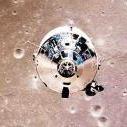
DIY Film Look
webrunner5 reacted to freeman for a topic
I like the look of vintage documentaries and for me (having shot on a gh2 and gh4 for all of my personal and client work) I have found lenses to be the most significant decider in the "look" of any of my films. All of the "look" in this clip is because of the lens, I used an Angenieux 12-120 from the late 60s: Grading is necessary and especially with these old lenses if you want to bring back some contrast. I have been using film convert (fcpx plugin) lately and really liking the grain in that emulator, and also the relative speed I can get a decent look going. This short with the rally cars was graded with a LUT and some individual tweaks (it was before I purchased film convert) but I find film converts grain to really add a nice layer in that "film" look. I would say though the lens is where you start, and going back a couple decades gets you a look thats not so common anymore.1 point -
DIY Film Look
Ed_David reacted to HockeyFan12 for a topic
There is some truth to the first part but I question the second part. How are you shooting and scanning film affordably? 16mm or 35mm? If I can figure out how to I would love to.1 point -
DIY Film Look
Ed_David reacted to HockeyFan12 for a topic
I worked on a feature that was shot on 35mm with a digital b camera and I shot some b camera stuff too, which was a blast. First and only chance to get to use a Fisher dolly. Same (very very expensive) lenses on both cameras, same lighting we're talking nine lights really old school big light set ups. Anyhow we had to match the two. And they did NOT look the same. So in post what I did (way before film convert, this is before the Alexa was even announced it was way back when lol) was to make sure they had shot color checker charts. Then in post I lined up the vector scopes side by side and used the hue v hue line to match the colors on the charts. Made some gamma curves by eye. Applied that as a preset and tweaked from there. And then used a film grain effect, too. (Again, this was before film scans were widely available and the film grain we shot for compositing was too slow to apply across a feature.) Did it work? Not really lol. Tungsten matched but we had an HBO exec at the theatrical screening who called out some shots, probably the daylight ones. They did not feel the same exactly. Skew was one issue (okay, it was a Red One MX lol), blown highlights... a bit less of an issue than you'd expect since everything was lit great and the b cam was picking up close ups with fewer practicals in frame. The crazy part was that the vectors cope on the video was more "diffuse" than the film one, as if the color had way less resolution even at 1080p and the saturation appeared lower even at the same saturation level, which you know you can't push it too high for broadcast, so the Red stuff looked less vivid. That said, it was quick and dirty work. And it matched REALLY closely for the most part. We used older lenses which were sharp but a bit... smooth. So that helped. What worked: lighting exactly the same as you would for film, using expensive support gear, $200,000+ lenses, painstaking grading, super imposing film grain. Shooting film as a reference. What didn't work: Painstaking grading as well as we'd like lol. For us the key was shooting film as a reference and lighting for film and using the same support gear and lenses you'd use. Without that, it wouldn't have been possible. And even then, we only got so close. But hey, it was a cool project and we got really really close. That said, it can be done. Check out Yedlin's Nuke script. Breathtaking work there. If only we could get our hands on it!1 point -

Two Things I've Learned - Shooting 16mm Glass on the Blackmagic MIcro
Kurtisso reacted to Ed Andrews for a topic
This looks amazing. Really gets that super16 feel. I've been shooting a series of docs with bmmcc and zeiss 12-120. Here's one. It comes out a bit sharper than the Angeniuex but still love the whole combo with old s16 glass1 point -
To get a film look: Don't clip your highlights when filming Shoot with lower contrast settings, including turning in-camera sharpness down or off Turn down or off noise reduction and/or add organic noise grain in post (subtle is best IMO unless going for an effect) Use a diffusion filter, e.g. Tiffen Black Pro Mist 1/4 (I use one sometimes) In post bring your whites down so nothing is super white (study film to learn the levels) If too sharp or any visible digital artifacts, apply Gaussian Blur to reduce or remove. Then if too soft try Unsharp Mask (verses Sharpen) to bring back more apparent detail, and Unsharp Mask can also be used to create a Local Contrast Enhancement (LCE) effect: use a very large radius- over 100, perhaps 200 or 300+ and adjust other settings as needed Study the contrast curves / gammas of film, compare to similar shots on video-looking shots to learn the difference. Do the same with colors You can get a film look straight from camera with a bit of work. 1DX II (other Canon DSLR will look similar), on the left is Canon Standard with bit of grading and on the right is a custom profile with only contrast and sharpening in post. See full screen- at first they may look similar, look more closely at the skintones, eyes, and all colors: I will try something similar for Panasonic and Sony after I finish the Canon version (I think the Panasonic and Sony versions will require a LUT in post to match what I can do with Canon SOOC). More info here:1 point
-

Canon C200 vs Panasonic GH5, a preview
jhnkng reacted to AaronChicago for a topic
You're going to spend more money on CFast 2.0 cards than the actual camera.1 point -
We have done comparative tests with Resolve between a desktop i7 6800 6 cores with a GTX 1070 8 GB Vram and a 15 inch 2.3 Kg gaming notebook 4 cores i7 7700HQ with a GTX 1070 8 GB Vram both equipped with an M.2 SSD and the difference is not that much basically in order of a few fps. The new NVidia GTX 1070/80 for notebooks are not that much slower than the desktop counterpart just google to see various benchmark, it is not like the old Mobile versions. I'm a lot on the road and having everything with me and being able to edit and grade quickly is very important, naturally at the desk with a great 4k monitor is better but no need to move hdd, cables, sync software settings etc.. Also being able to do changes in an efficient way at customer side is also quite valuable in the way I work. Considering that a gaming notebook is not that much more expensive than a desktop counterpart for Windows / Resolve user is not a too bad option. The notebook has a 512 M.2 and I have added an internal 2TB SDD so no need of external enclosure etc.. once in the office I backup and archive on an external raid system. Buying both a desktop and a powerful enough notebook is also quite expensive and without a good GPU Resolve is really bad in perf. Also if need to deliver something at customer side and you need to render 4k in resolve with less than 4 GB vram good luck.. Naturally if you are editing or grading multicam 4k or Raw or 8k then a powerful dual cpu and gpu workstation is another story but also price range. Also if you always edit grade in your studio then a powerful desktop is the best option. The good news that there are solution for every type of work today either desktop, notebook or egpu....1 point
-
Yeah, with every passing day of looking at footage I shot, I am constantly disappointed. And the only footage I've shot where I am surprised by how good it looks, is from my 50D with ML Raw, or old BMMCC or BMPCC footage. I am a horrible colorist so I think B&W Raw may be in my future.1 point
-

Your ideal NX1 Settings
Nicholson Ruiz reacted to Parker for a topic
1 point






